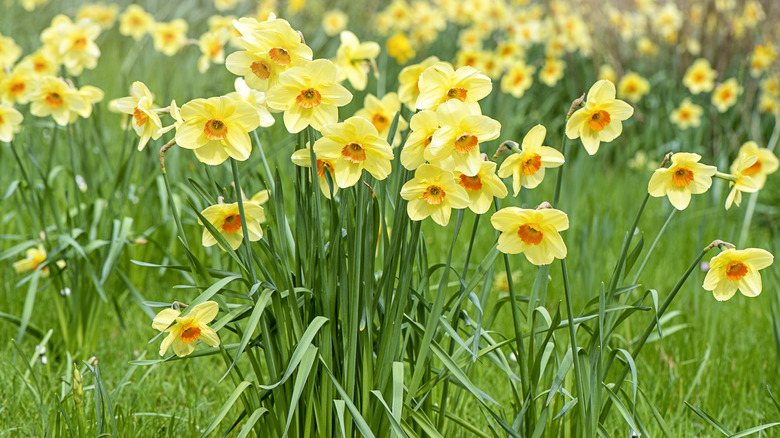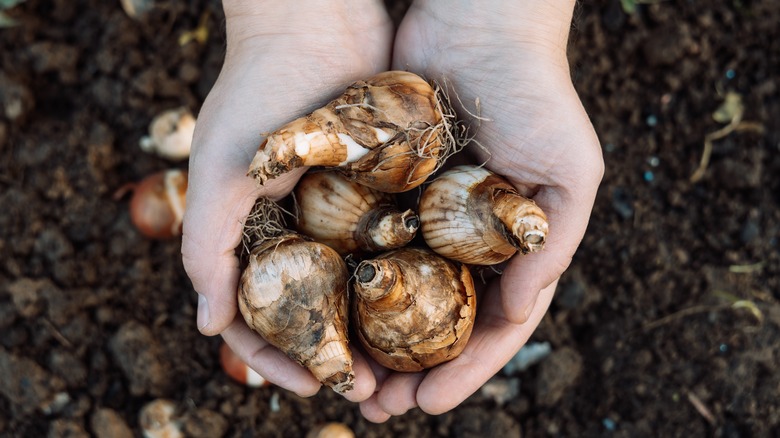This Is The Best Time To Fertilize Daffodil Bulbs For Flourishing Blooms
Spring flowering bulbs like daffodils (Narcissus spp.) can require a bit of thinking ahead. These signs of spring actually require much of their care to happen in autumn. Not only is autumn the ideal time for planting daffodil bulbs as it gives them time to get their roots established before winter, but it's also generally the best time to fertilize newly planted bulbs. Surprisingly though, for established daffodils, the best time to fertilize is as they are emerging in spring.
Unlike many other spring bulbs like tulips, which require cold winters to bloom well, daffodils don't require a set number of chill hours, making them an excellent spring bulb option in zones 3 through 10. While not native to North America, these non-invasive flowers naturalize well and can easily thrive for decades or more if they're planted in a good location that gets at least partial sun and has well-draining soil where the bulbs won't be prone to rotting. While daffodils aren't considered especially heavy feeders, they do benefit from a slow-release fertilizer that contains more phosphorus and potassium than nitrogen.
How to fertilize daffodils
Since the best time to feed your new daffodil bulbs is in the fall, you can plant and fertilize them at the same time. Remember to plant your bulbs about 6 inches deep and have the pointed part of the bulb facing up. While it is a popular daffodil planting myth that you should soak the bulbs first, this is unnecessary and could even encourage rotting. When you first plant your daffodil bulbs, it's generally recommended to include about a handful of slow-release fertilizer per dozen bulbs. Just make sure it is mixed into the soil and isn't directly touching your bulbs as direct contact with fertilizer granules can make bulbs more prone to damage. While bone meal has been a popular bulb fertilizer recommendation in the past, using bone meal as fertilizer is often avoided now as it can attract pests. You may assume you're adding this fall fertilizer to help the daffodils bloom well in the coming spring, but they actually already have all the nutrients they need for that flower inside the bulb. The fertilizer is instead to help your daffodils come back and thrive in subsequent years.
Fertilize established daffodils just as their new growth is starting to emerge. A light sprinkle of slow-release fertilizer is likely plenty for these low-maintenance beauties. If soil tests show your soil is healthy and fertile, you may find that even this is unnecessary. Avoid fertilizing your daffodils once they have started to flower as this could lead to rot.

